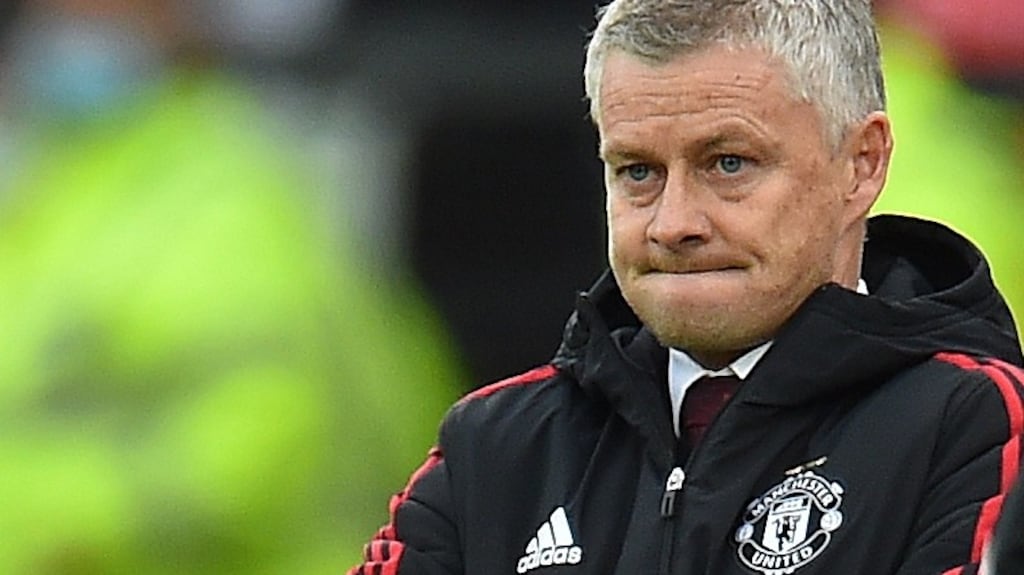Football is a game that only occasionally follows the script. Before every big game everybody prognosticates, looks at the form and the history, considers the tactical match-ups and tries to read the way the historical wind is blowing. Even when the predictions are largely right in terms of the pattern of the game, the score doesn't always follow. Which was what made the one-sided Manchester derby on Saturday so remarkable: it was utterly, dully predictable.
You didn't have to be Paul Scholes, the toe-sucking seer of Salford, to see what was going to happen. Ole Gunnar Solskjær had United sit deep in the 3-5-2 shape that last week looked as though it might serve as a short-term fix, to keep crisis at bay for another couple of months. City, as they had against a far better-drilled Chelsea side attempting a similar approach, would pick their way between the bollards, dominate the game and win. The level of comfort would not quite be matched by the scoreline because of the visitors' weird inability to take their chances in certain games. And, lo, it came to pass.
It's not about the formation, per se. This has worked for United against City before. Prior to last week's win at Spurs, the last time they started with a back three in a league game was in March 2020, when they beat City 2-0 with a team strikingly similar to the lineup on Saturday. On that occasion, Brandon Williams started at left wing-back with Luke Shaw replacing Eric Bailly in central defence, Nemanja Matic played instead of Scott McTominay and the front two were Dan James and Anthony Martial (although both Bailly and McTominay came on). The system can work.
But what is different now is the context. The back three then felt like a specific plan - United had used it a couple of months earlier in losing at Anfield - rather than a desperate spin of the kaleidoscope, hoping for something to take shape. Nobody can believe this is the way United want to play long-term, because to do so would mean only one of Marcus Rashford, Mason Greenwood and Edinson Cavani is ever going to start. It would also mean there is no place at all for poor Jadon Sancho, whom United pursued for 18 months before finally signing for £73m.
An alternative for certain big games? Perhaps. But any confidence that it is a specific plan for specific circumstances is undermined by the fact that United, having not used it in 18 months, have suddenly turned to the shape three times in a week against very different opponents, also employing a back three in the 2-2 draw with Atalanta in midweek.
There is a sense of chaos and drift and that infects players. In that 2-0 derby win 18 months ago, Aaron Wan-Bissaka was magnificent, making eight tackles and being named man of the match. On Saturday he made poor decisions again and again as he had in the defeat to Liverpool, his ability to judge when he should go to the man on the ball apparently shot.
Harry Maguire and Shaw are way off the levels they showed last season or for England in the summer. Then there's Bailly. Perhaps his own goal was the result of an inherent rashness but, if that is the case, why was he given a new three-year contract in the summer? Solskjær's opinion was apparently exposed by the way he rushed Maguire back from injury for the defeat at Leicester, when his inability to push off his damaged calf was surely a contributory factor in Youri Tielemans's equaliser.
Bailly was very good against Atalanta on Tuesday, Duván Zapata’s goal far more the result of the lack of pressure on José Luis Palomino that allowed him to measure a ball behind the centreback than his own positioning. Now he joins Sancho and Donny van de Beek as a personnel question resulting from an absence of coherent planning. What happened to the talk, after José Mourinho was sacked, of appointing a director of football to offer a coherent philosophy? Did that just melt away when the decision to give Solskjær the job permanently was made? Was it assumed that nostalgia, which had largely neutralised the Mourinho toxicity, would be enough going forward? What happens next? Is there a plan?
Antonio Conte has slipped through United's fingers, just as Thomas Tuchel and Mauricio Pochettino did. Indecision reigns, not helped by the instinctive veneration of the past, and the terror of sidelining a club icon. Yet Solskjær used to be adept at setting up teams to defend.
Last season, United kept five clean sheets in the six league games against City, Chelsea and Liverpool. He’s won four of his nine games against Pep Guardiola. That wasn’t the aspect of his management that used to be doubted. So what has changed? Why have United let in seven goals in two home games against Liverpool and City while being embarrassingly outclassed?
The answer is obvious: Cristiano Ronaldo, a player signed at the urging of Alex Ferguson and various former players with seemingly about 12 hours thought. Yes, he scores goals. Yes, he rescues results against the 13th-best team in Spain and the fifth-best team in Italy and punishes the likes of Newcastle and Tottenham.
Ronaldo has no doubt been a major boost to the burgeoning United heritage industry, even to the point of scoring dramatic late goals to offer a reminder of how things used to be. But are the glory days even remotely close to returning? Not with these players, not with this manager, not with this board.
– Guardian
















